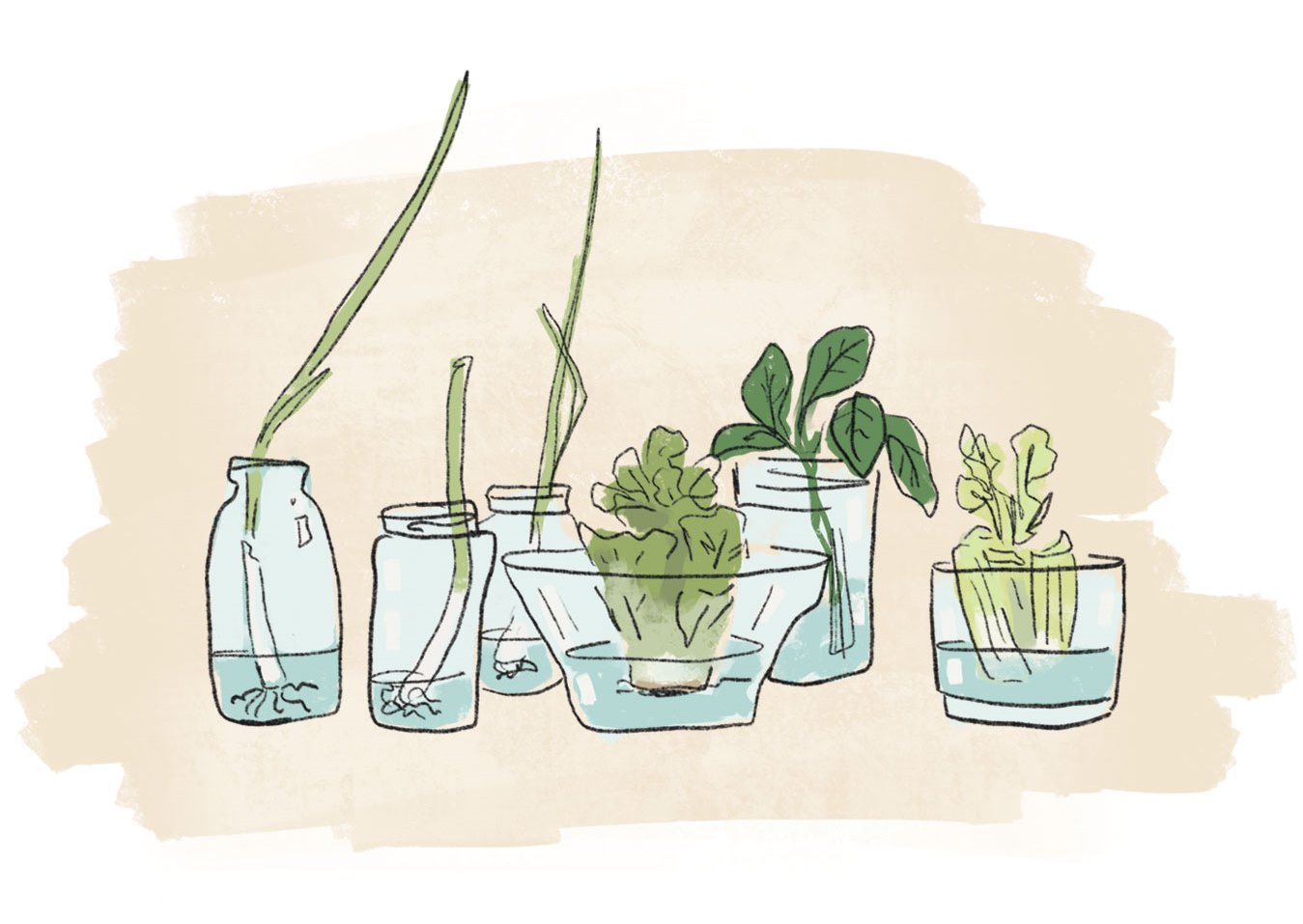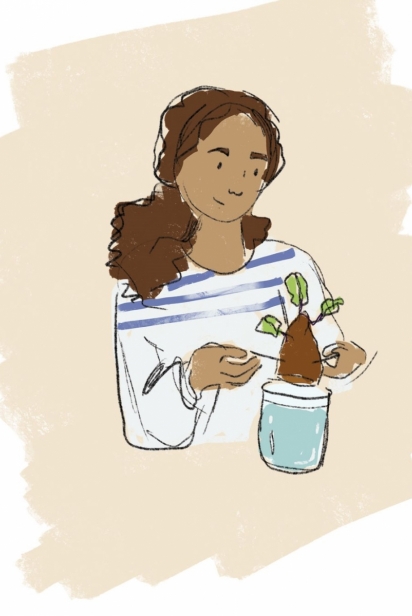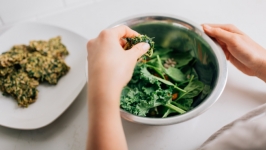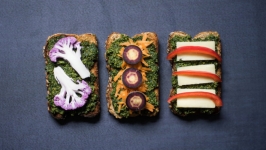Growing Food from Scraps
In efforts to reduce food waste, perhaps you’ve become adept at making soup stock from kitchen scraps and have a compost pile underway. Ready for a fun, easy garden project to cut down even further on food waste? Try your hand at growing some of your own vegetables and herbs. This edible DIY activity is fun for all ages and it's a good way to teach kids about where food comes from. Another bonus of this project? It reuses everyday packaging such as yogurt cups, milk cartons, egg cartons, paper towel and toilet paper rolls or other items that can be easily cut, and turns them into planting containers. And, the growing fun continues once the veggies are big enough to put in the ground. To get you started, here are five common vegetables and herbs that can be easily grown from leftover scraps.
SWEET POTATOES
If left uneaten long enough, these tubers will often start to sprout leaves. To get a head start, wash the potatoes and cut them in large sections. Place each section in a container and fill with water until the bottom half of the piece is submerged. Use toothpicks to hold the potato sections in place. Place the container where it will get several hours of bright, indirect sunlight a day or under grow lights. Add more water as needed. The potato pieces will be covered with leafy sprouts on top and roots on the bottom in a few weeks. To grow the potatoes in the ground, separate each sprout by carefully twisting it off the sweet potato. Place each sprout in a shallow bowl with the bottom half of the stem submerged in water and the leaves hanging out over the rim of the bowl. Within a few days roots will emerge from the bottom of each new plant. When the roots are about an inch long the new slips are ready to plant in the garden.
LETTUCE
This regrow method works with romaine or any type of leafy green that comes in a head or bunch. Slice off leaves from the stem, leaving about 2 inches of the base intact. Place the stem base in a container, cut side up. Fill the container with water about halfway up the stem. Place the container where it will get several hours of bright, indirect sunlight a day or under grow lights. Change the water every 1 to 2 days, making sure the lettuce base is always submerged and the water doesn’t dry up. Within a day or two, you should see little green leaf shoots beginning to grow, with leaves ready to harvest within about 12 days. You can continue to grow the lettuce in the container or transfer to a pot or garden
GREEN ONIONS
After using the green tops, keep the white part and any intact roots. Place root end down in a container. Fill with enough water to cover the roots, leaving the top edges above water. Place the container where it will get several hours of bright, indirect sunlight a day, or under grow lights. Keep the roots submerged and change water at least once a week. After a few days, green shoots will emerge from the tops of the bulbs. Harvest directly from the container with a pair of kitchen shears or plant in the ground.
CELERY
Cut about 1 to 2 inches off the bottom of a bunch of celery. Store stalks in refrigerator until ready to use. Place remaining base in a shallow container (such as the common ones above) and add enough water to submerge about 1 inch of the base. Place the container where it will get several hours of bright, indirect sunlight a day or under grow lights. Change the water every 1 to 2 days, making sure the celery root end is always submerged and the water doesn’t dry up. The celery should start to sprout after a few days, with small leaves emerging from the very center of the top. After about a week you will see tiny roots around the base. When the roots are about an inch long, plant the celery in potting soil or your garden.
BASIL
Fresh herbs such as basil, mint and oregano are easily grown from cuttings. Simply snip a stem about 4 to 6 inches long from a mature plant, remove any leaves from the stem and place the cutting in a container. Fill with enough water to cover halfway up the stem. Place the container where it will get several hours of bright, indirect sunlight a day or under grow lights. Change the water every few days. Roots will grow usually within a week. You can continue to grow the herb in the container or transfer to a pot or garden.




















